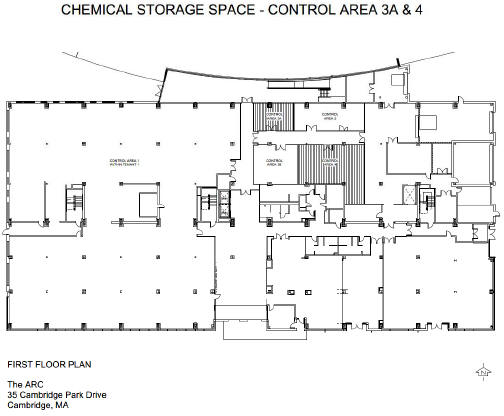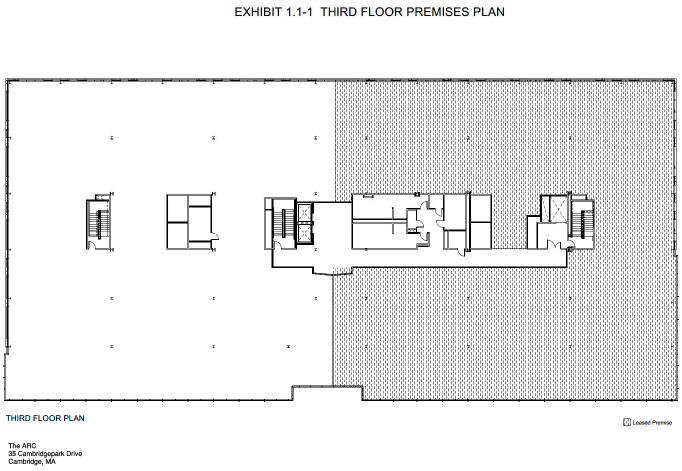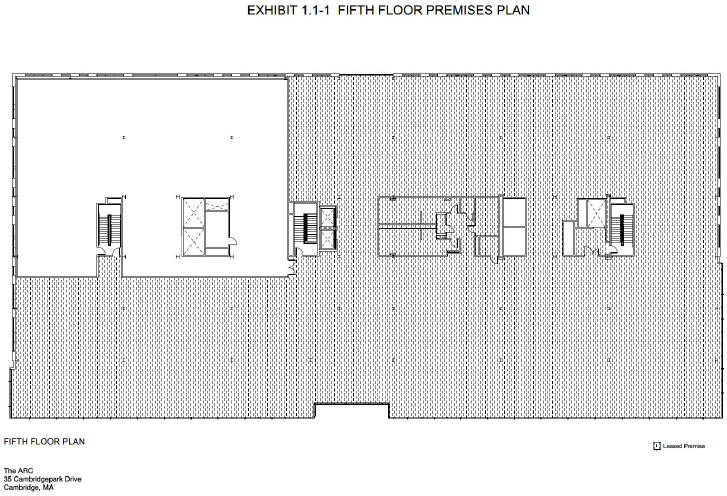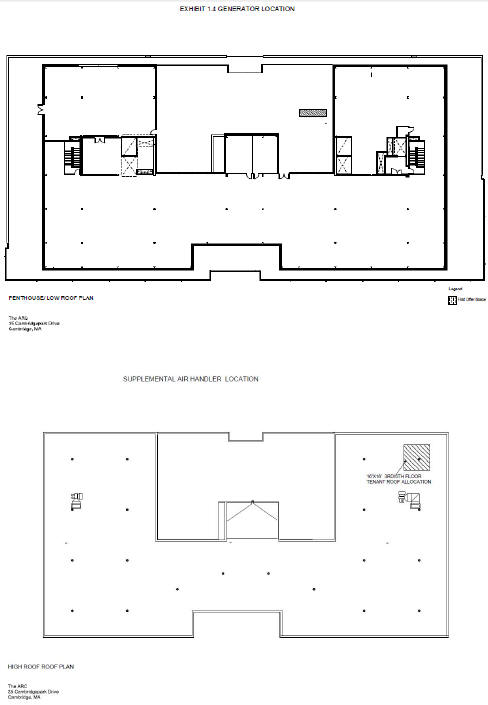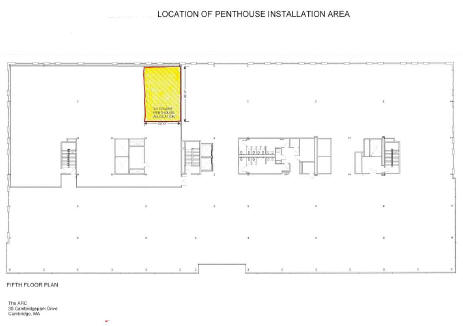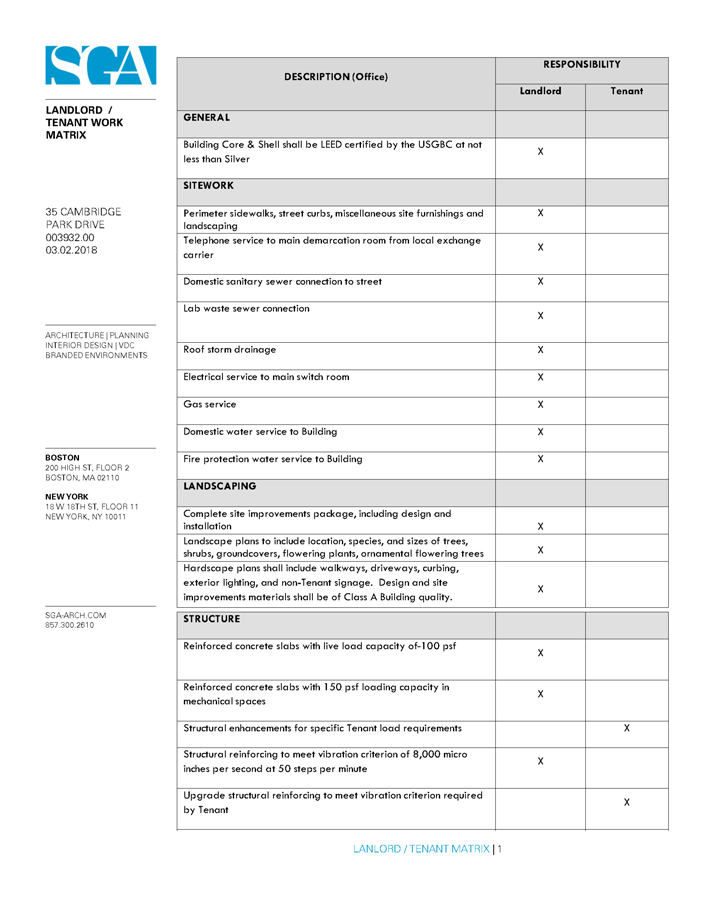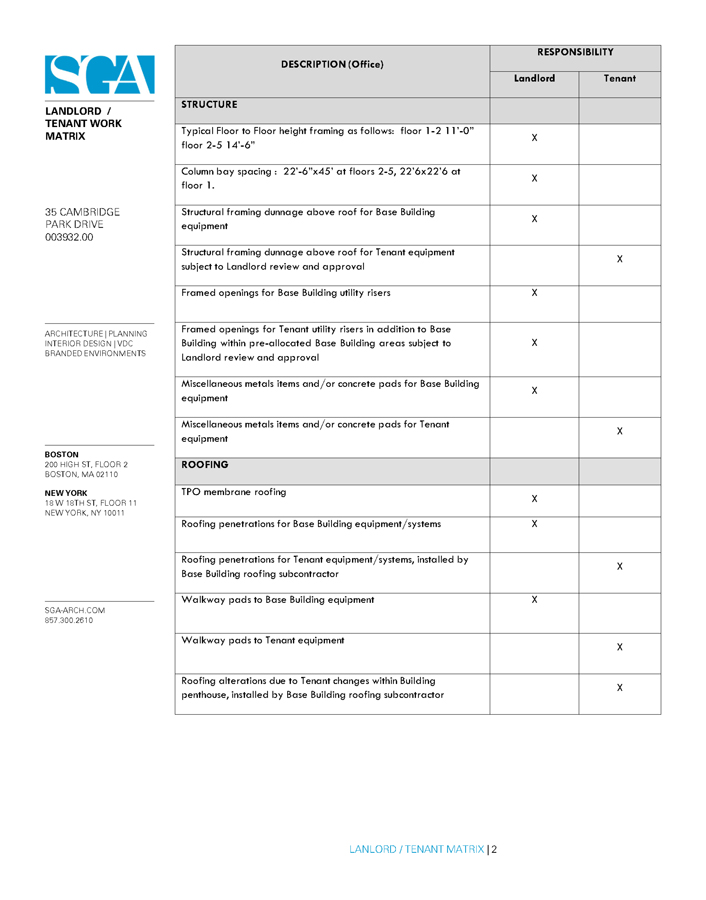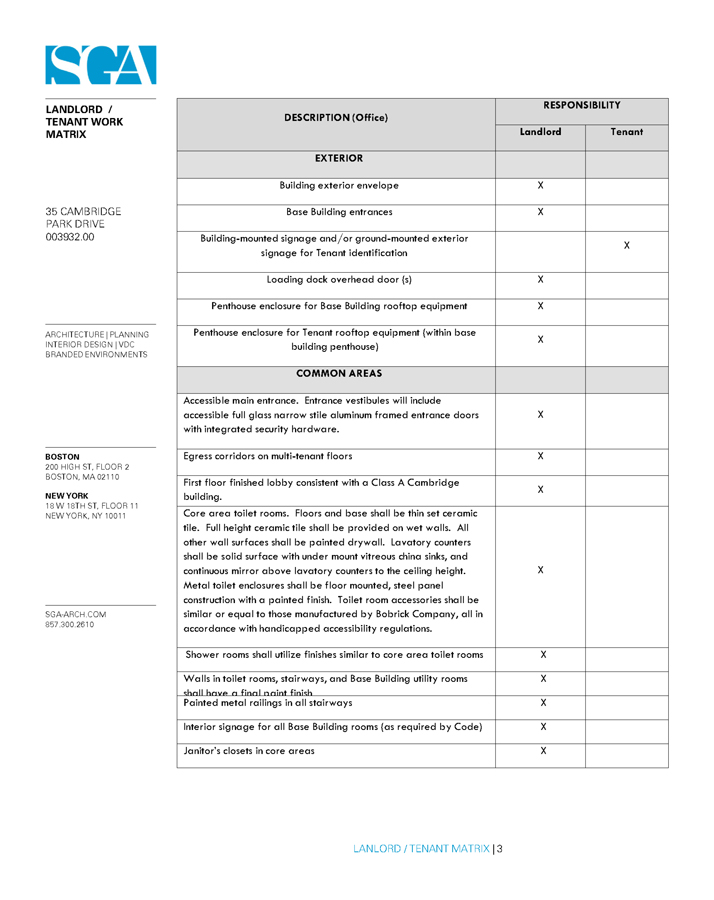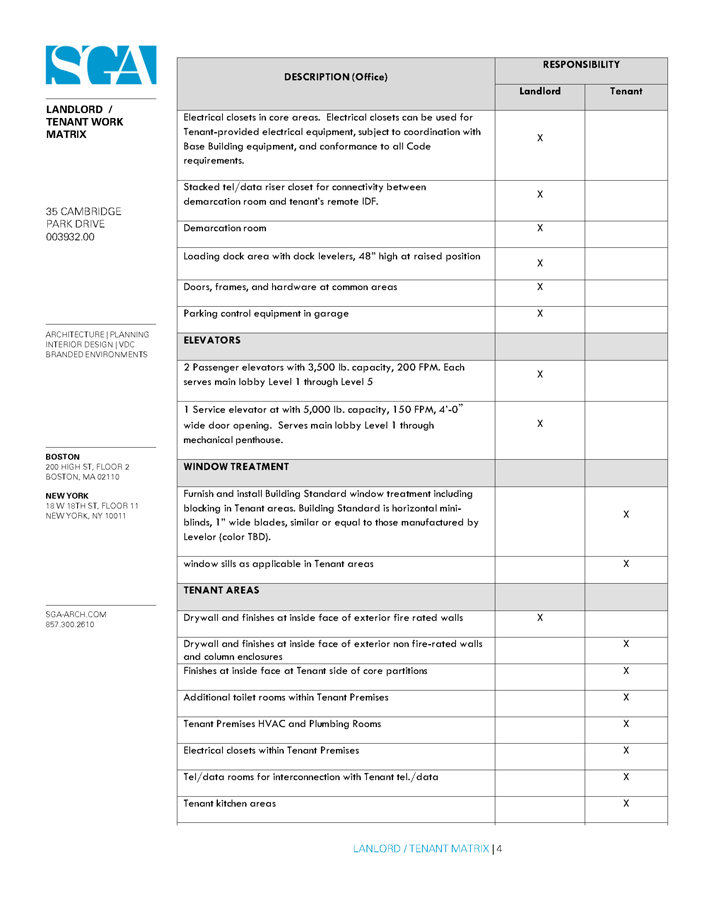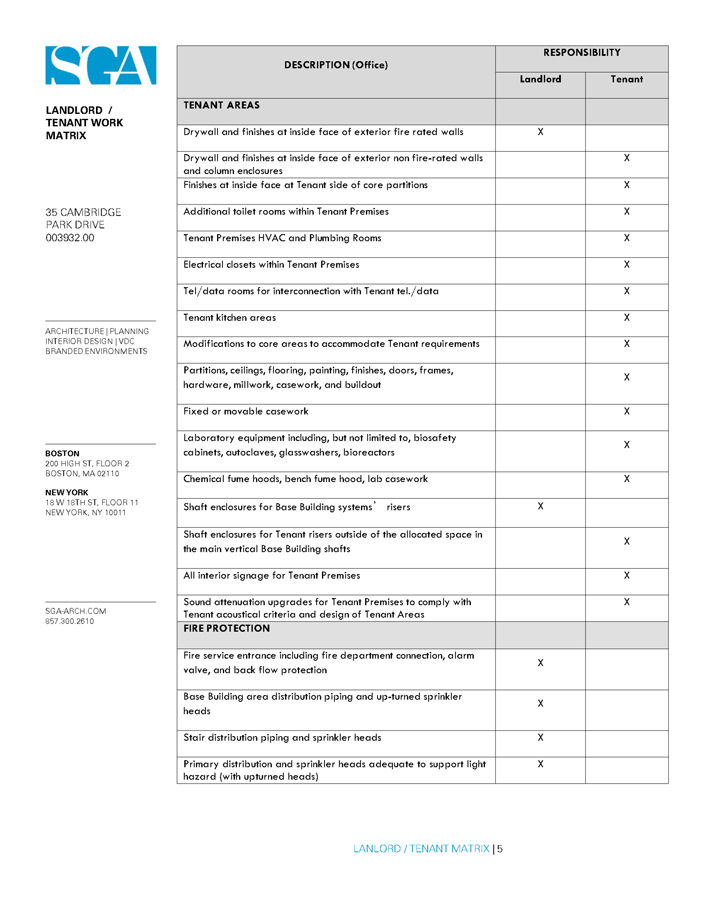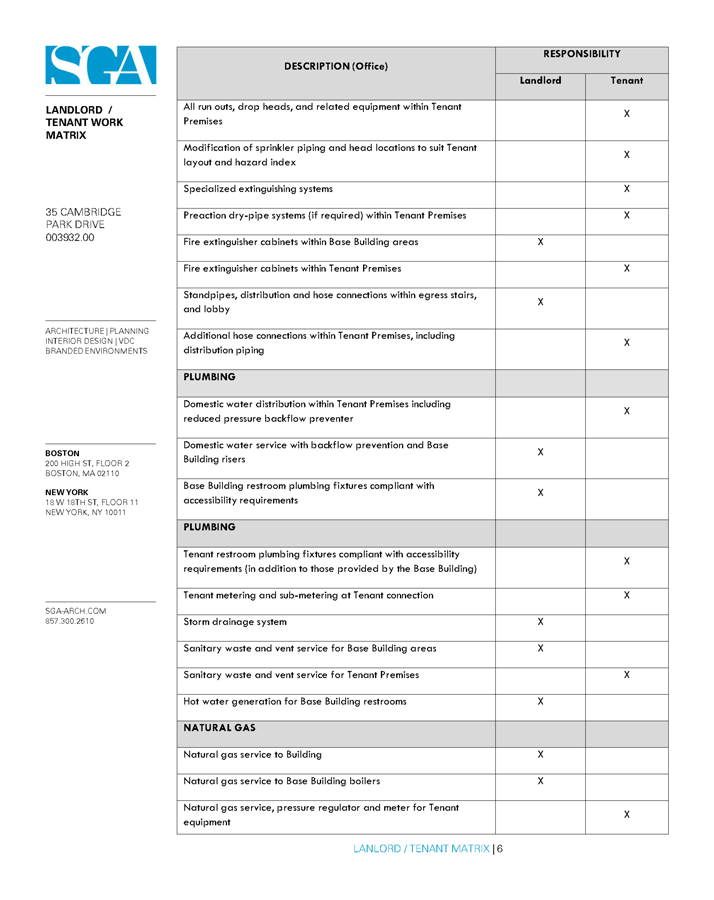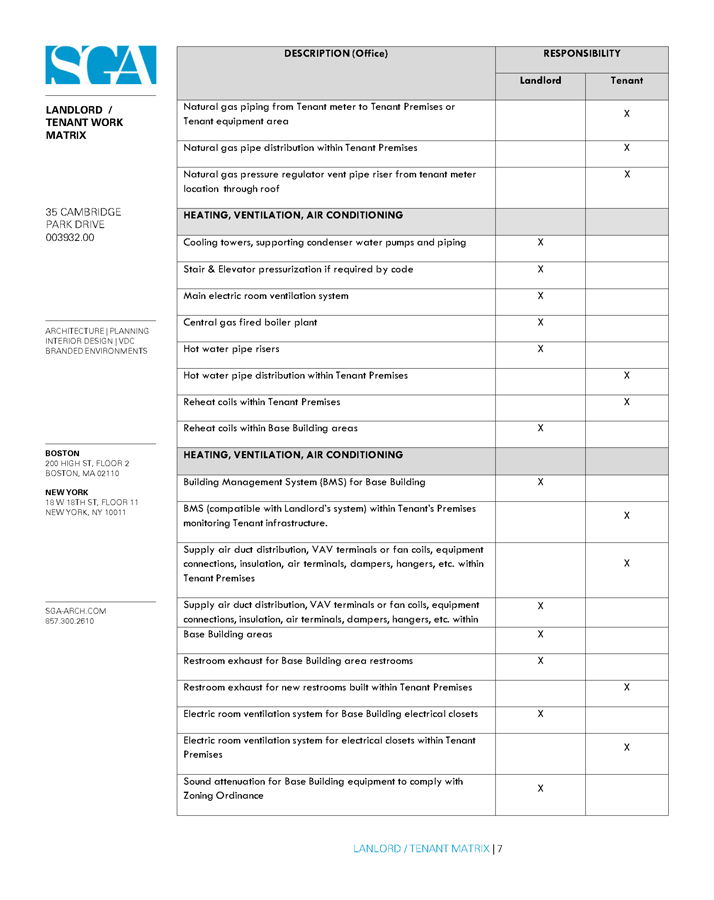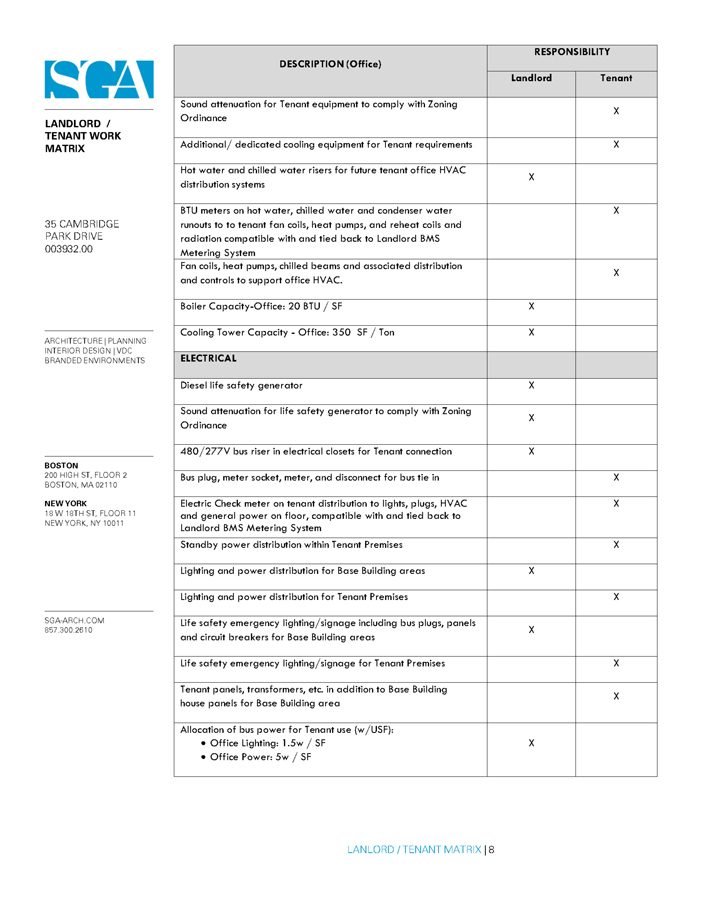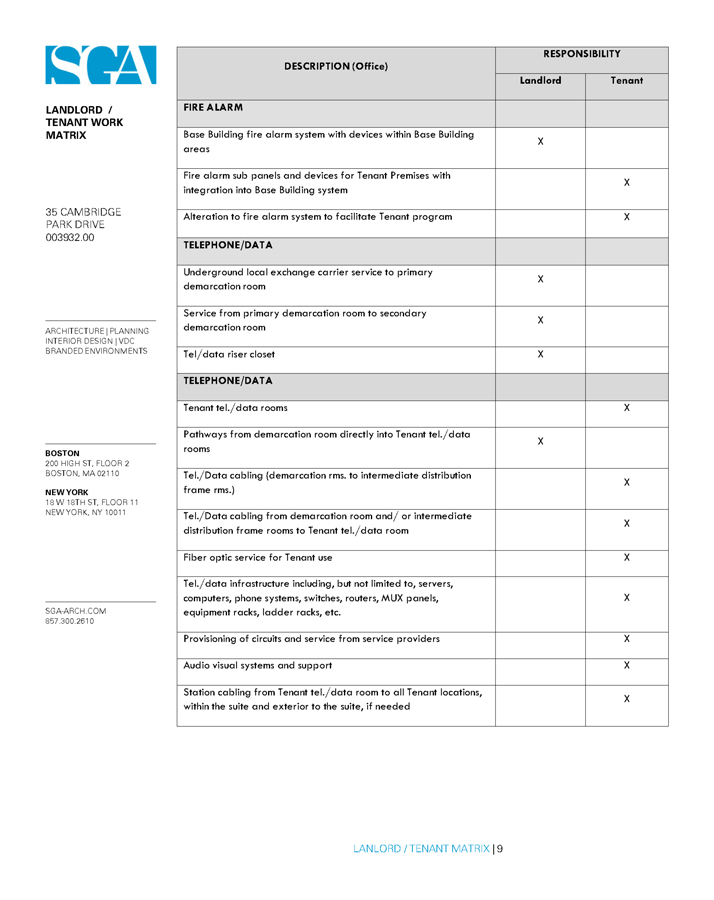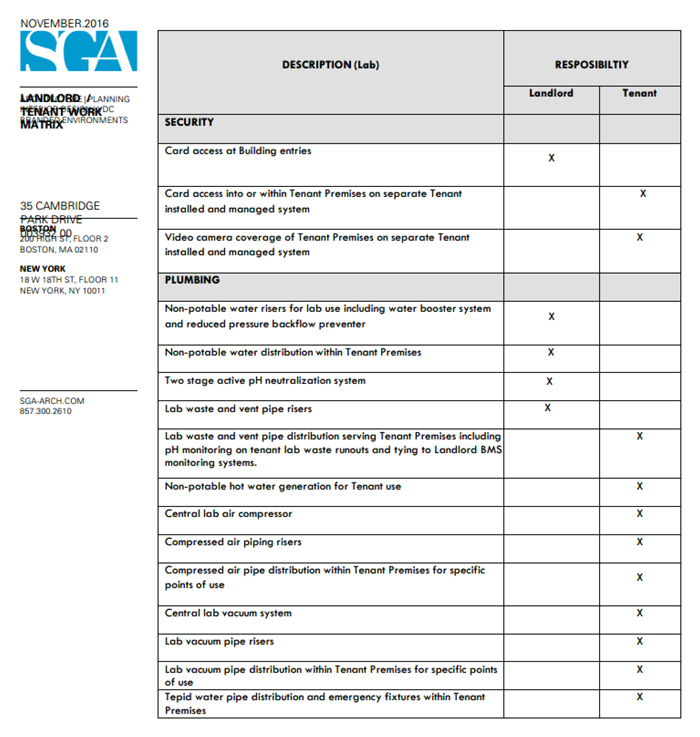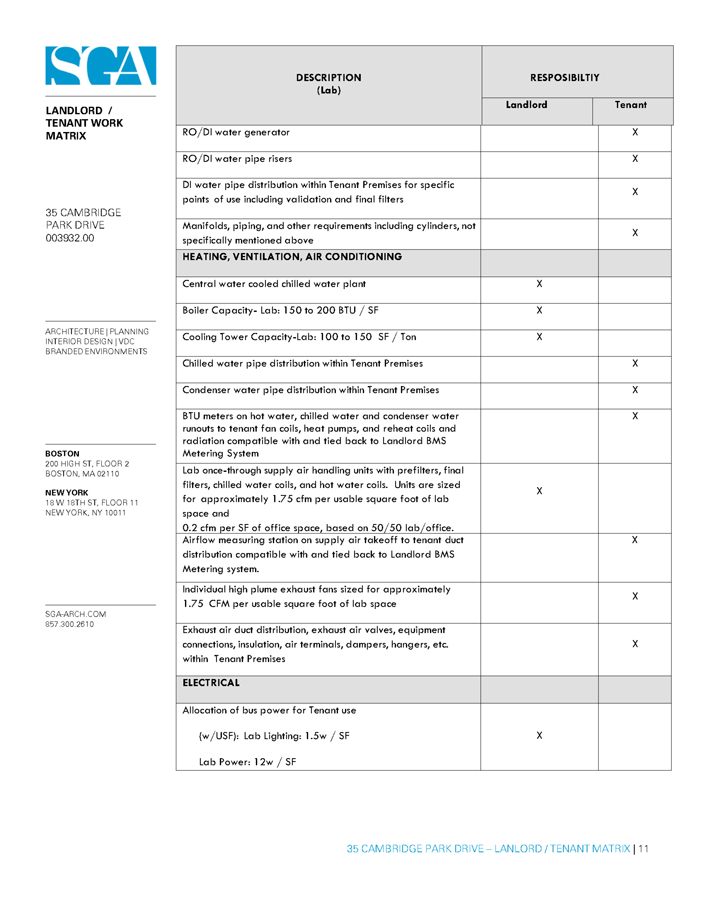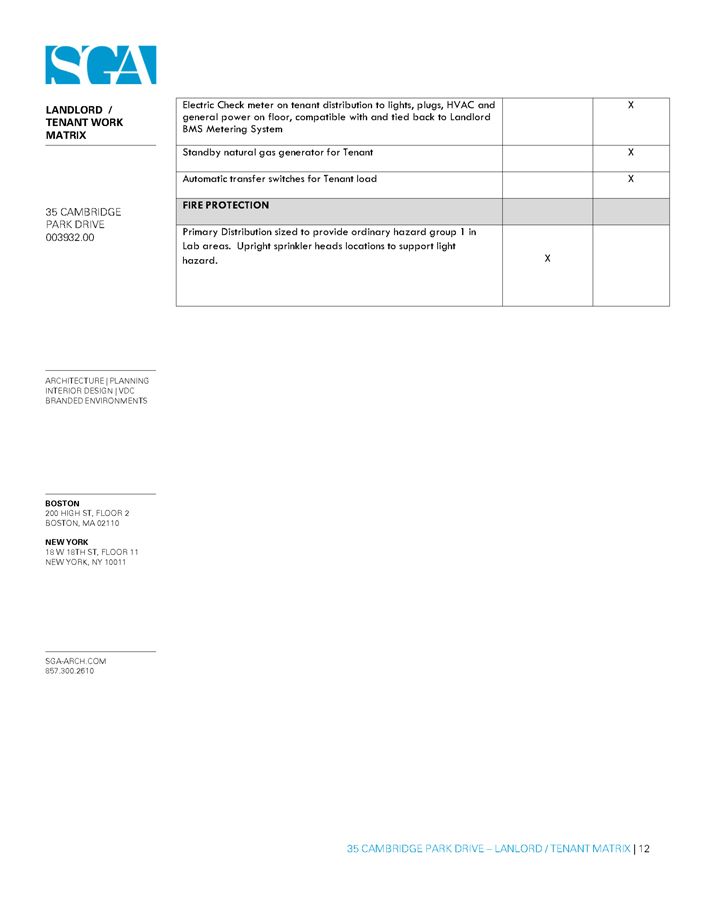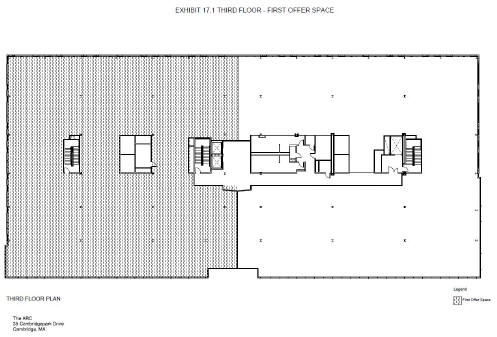“hazardous materials”, or “toxic substances” under any Environmental Laws. The term “Hazardous Substances” for purposes of this Lease shall also include any mold, fungus or spores, whether or not the same is defined, listed, or otherwise classified as a “hazardous material” under any Environmental Laws, if such mold, fungus or spores may pose a risk to human health or the environment. For purposes of this Lease, “Release” or “Released” or “Releases” shall mean any release, deposit, discharge, emission, leaking, spilling, seeping, migrating, injecting, pumping, pouring, emptying, escaping, dumping, disposing, or other movement of Hazardous Substances into the environment.
Notwithstanding anything contained herein to the contrary, in no event shall Tenant or anyone claiming by through or under Tenant perform work at or above the risk category Biosafety Level 3 as established by the Department of Health and Human Services (“DHHS”) and as further described in the DHHS publication Biosafety in Microbiological and Biomedical Laboratories (5th Edition) (as it may be or may have been further revised, the “BMBL”) or such nationally recognized new or replacement standards as Landlord may reasonable designate. Tenant shall comply with all applicable provisions of the standards of the BMBL to the extent applicable to Tenant’s operations in the Premises.
7.6.1.2Notices to Landlord. Unless Tenant is required by Applicable Laws to give earlier notice to Landlord, Tenant shall notify Landlord in writing as soon as possible but in no event later than five (5) days after (i) the occurrence of any Release or threat of Release of any Hazardous Substance in, on, under, from, about or in the vicinity of the Premises (whether past or present), regardless of the source or quantity of any such Release, or (ii) Tenant becomes aware of any regulatory actions, inquiries, inspections, investigations, directives, or any cleanup, compliance, enforcement or abatement proceedings (including any threatened or contemplated investigations or proceedings) relating to or potentially affecting the Premises, or (iii) Tenant becomes aware of any claims by any person or entity relating to any Hazardous Substances in, on, under, from, about or in the vicinity of the Premises, whether relating to damage, contribution, cost recovery, compensation, loss or injury. Collectively, the matters set forth in clauses (i), (ii) and (iii) above are hereinafter referred to as “Hazardous Substances Claims”. Tenant shall promptly forward to Landlord copies of all orders, notices, permits, applications and other communications and reports in connection with any Hazardous Substances Claims. Additionally, Tenant shall promptly advise Landlord in writing of Tenant’s discovery of any occurrence or condition on, in, under or about the Premises that could subject Tenant or Landlord to any liability, or restrictions on ownership, occupancy, transferability or use of the Premises under any “Environmental Laws”, as that term is defined below. Tenant shall not enter into any legal proceeding or other action, settlement, consent decree or other compromise with respect to any Hazardous Substances Claims without first notifying Landlord of Tenant’s intention to do so and affording Landlord the opportunity to join and participate, as a party if Landlord so elects, in such proceedings and in no event shall Tenant enter into any agreements which are binding on Landlord or the Property without Landlord’s prior written consent. Landlord shall have the right to appear at and participate in, any and all legal or other administrative proceedings concerning any Hazardous Substances Claim. For purposes of this Lease, “Environmental Laws” means all applicable present and future laws relating to the protection of human health, safety, wildlife or the environment, including, without limitation, (i) all requirements pertaining to reporting, licensing, permitting, investigation and/or remediation of emissions, discharges, Releases, or threatened Releases of Hazardous Substances, whether solid, liquid, or gaseous in nature, into the air, surface water, groundwater, or land, or relating to the manufacture, processing, distribution, use, treatment, storage, disposal, transport, or handling of Hazardous Substances; and (ii) all requirements pertaining to the health and safety of employees or the public. Environmental Laws include, but are not limited to, the Comprehensive Environmental Response, Compensation and Liability Act of 1980, 42 USC § 9601, et seq., the Hazardous Materials Transportation Authorization Act of 1994, 49 USC § 5101, et seq., the Solid Waste Disposal Act, as amended by the Resource Conservation and Recovery Act of 1976, and Hazardous and Solid Waste Amendments of 1984, 42 USC § 6901, et seq., the Federal Water Pollution Control Act, as amended by the Clean Water Act of 1977, 33 USC § 1251, et seq., the Clean Air Act of 1966, 42 USC § 7401, et seq., the Toxic Substances Control Act of 1976, 15 USC § 2601, et seq., the Safe Drinking Water Act of 1974, 42 USC §§ 300f through 300j, the Occupational Safety and Health Act of 1970, as amended, 29 USC § 651 et seq., the Oil Pollution Act of 1990, 33 USC
20
